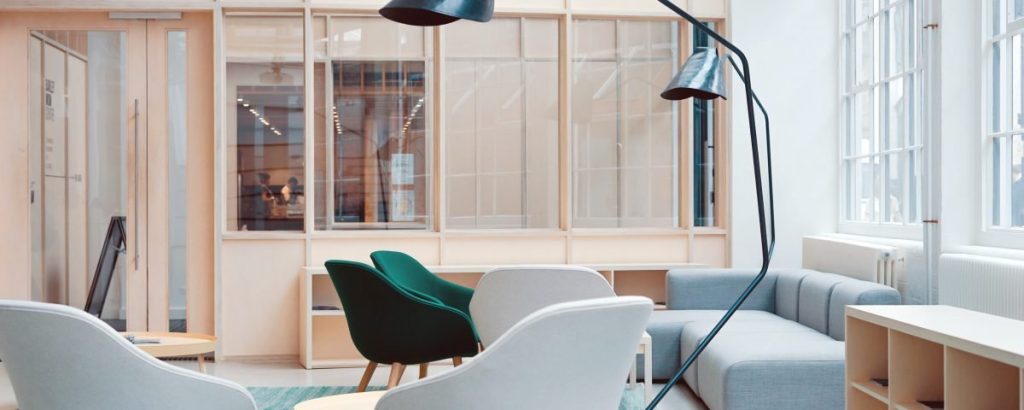June 20, 2022
3 Office Design trends for the New Normal
To use the catchphrase of 2020, we are living in unprecedented times that have shifted the world of work. This raises the question of how office design will adapt to accommodate this ever-evolving nature of the way people work. So we are here to update you with the latest trends in office design that offer solutions to the new normal.
The Hub Principle
With more people working from home than ever before, coming into the office has got to be appealing enough that it is perceived as a pleasure, and not a duty. This means giving the office a more accessible and fun ‘campus vibe’ with amenities, coffee facilities and attractive workspaces. With people able to do independent work at home and less demand for workstations, offices need to become a central hub where workers come to collaborate and innovate together. Sofas, coffee tables, and large meeting rooms are going to become all the more necessary, as people join together ( in a socially distanced manner) to embrace the office experience, enjoy each other’s company and relish the chance to see each other in person. Whilst many have hypothesised that the pandemic will be the end of community-focused office design, and the return of the dreaded desk divider, it is more important than ever that collaboration and communication is put at the heart of office design.
Safety, safety, safety
Reducing density and cleaning is not enough to ensure safety, and lots of workplaces are being really inventive in creating fantastic ideas to provide a safe environment for their workers. Under-utilised space is over, as every inch is precious. There are the basics like increased sanitation areas, using personal laptops only, limiting air conditioning usage, opening windows and using open floor plans to provide more airflow and clockwise circulation paths, but some innovators are going above and beyond. Ideas like installing ultraviolet lamps into air conditioning units to use UV-C radiation to reduce airborne infectious disease transmission. Or using microfiber finishes that are easy and simple to clean. One company, NanoSeptics, uses skins and mats to turn dirty public touch-points, like door handles, into continuously self-cleaning surfaces. Now that’s impressive thinking!
Organisation will also be key to ensuring safety. Those who work in offices are no stranger to the importance of organisation, but it has gained new relevance in office design trends of recent. Staggering schedules for confined spaces such as kitchen areas and toilets, as well as for arriving and leaving times, can be instrumental in making an office safe and usable. If not all of the workforce is in the office all the time, a reservation system will prove necessary.
There are a whole host of ways to make your office design safe, but, whatever the method is, it has got to be a priority.
Adaptable Design
With the flow of people utilising office spaces, constantly shifting, office design will have to become even more adaptable. Furniture should be light-weight, easily movable and reconfigured to help with sanitisation, and provide the flexibility to change your floor plans when needed. Meeting rooms need to provide enough space that they can adapt to a range of numbers of employees, whilst remaining socially distanced. Being susceptible to change is essential as new problems arise that need to be combatted. Employees may prefer unconventional work spaces, floor plans or transparent plastic screenings, whatever it is, office design needs to be ready to meet the needs of the user. If the user doesn’t feel safe, they will simply avoid utilising the office space and it may have a detrimental effect on mental health.
That’s a wrap…
Whilst designing office spaces that are appropriate for use in a pandemic provides many challenges, it is also a brilliant opportunity to be creative in designing spaces that are safe and welcoming places for employees to be. The challenge to create a space where people actively want to be is a great chance for some real imaginative thinking, and we can’t wait to see what new ideas are generated.

